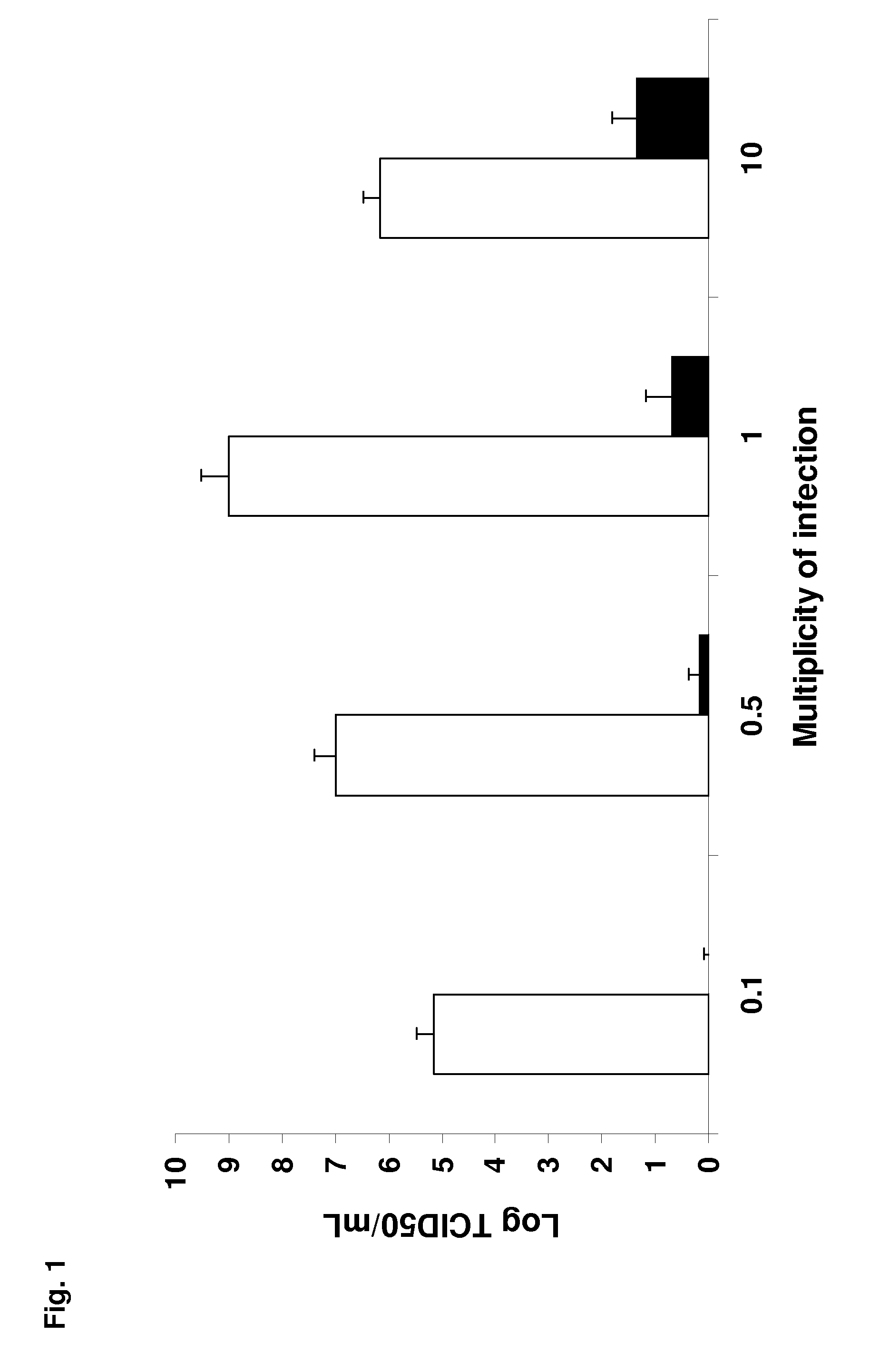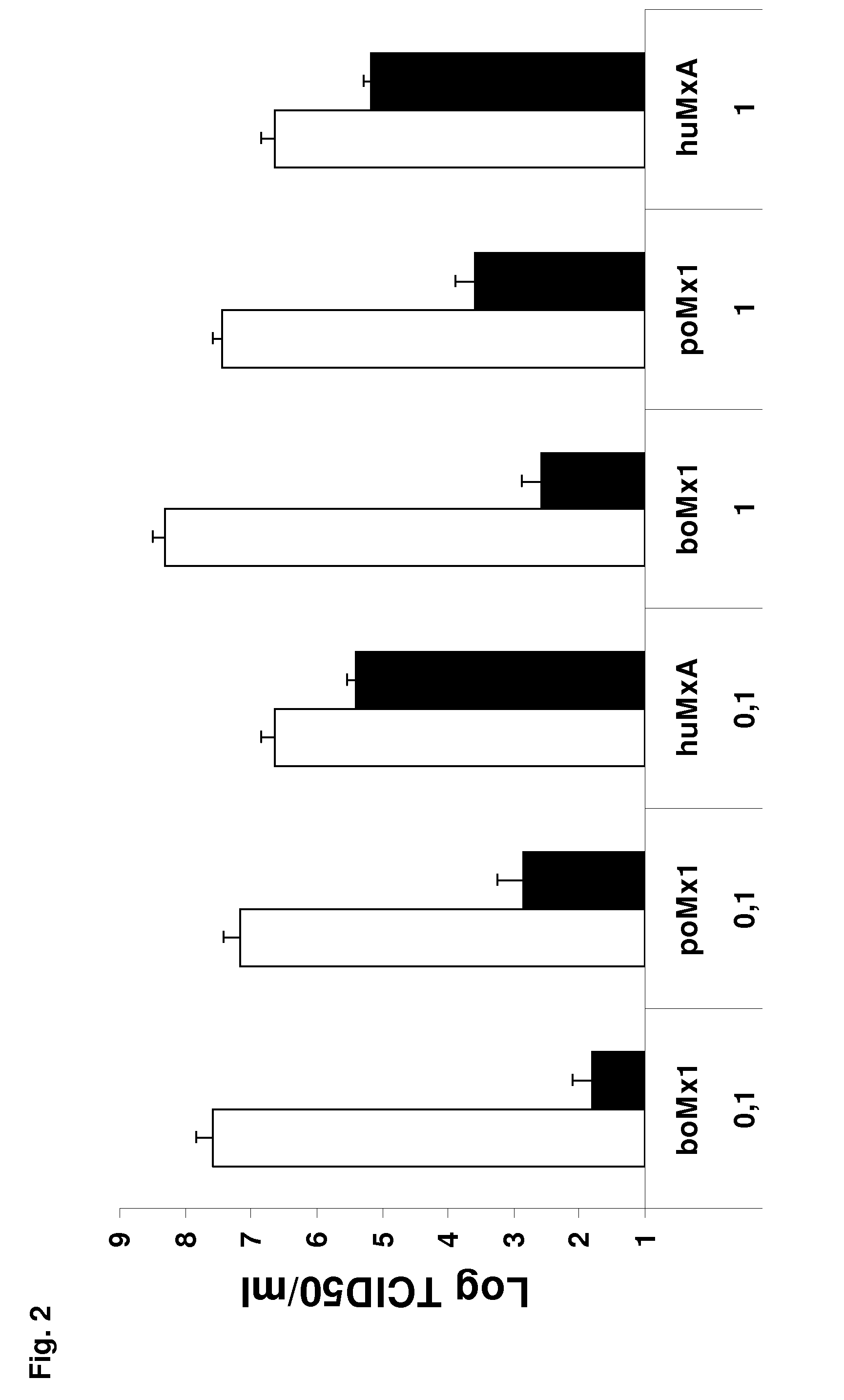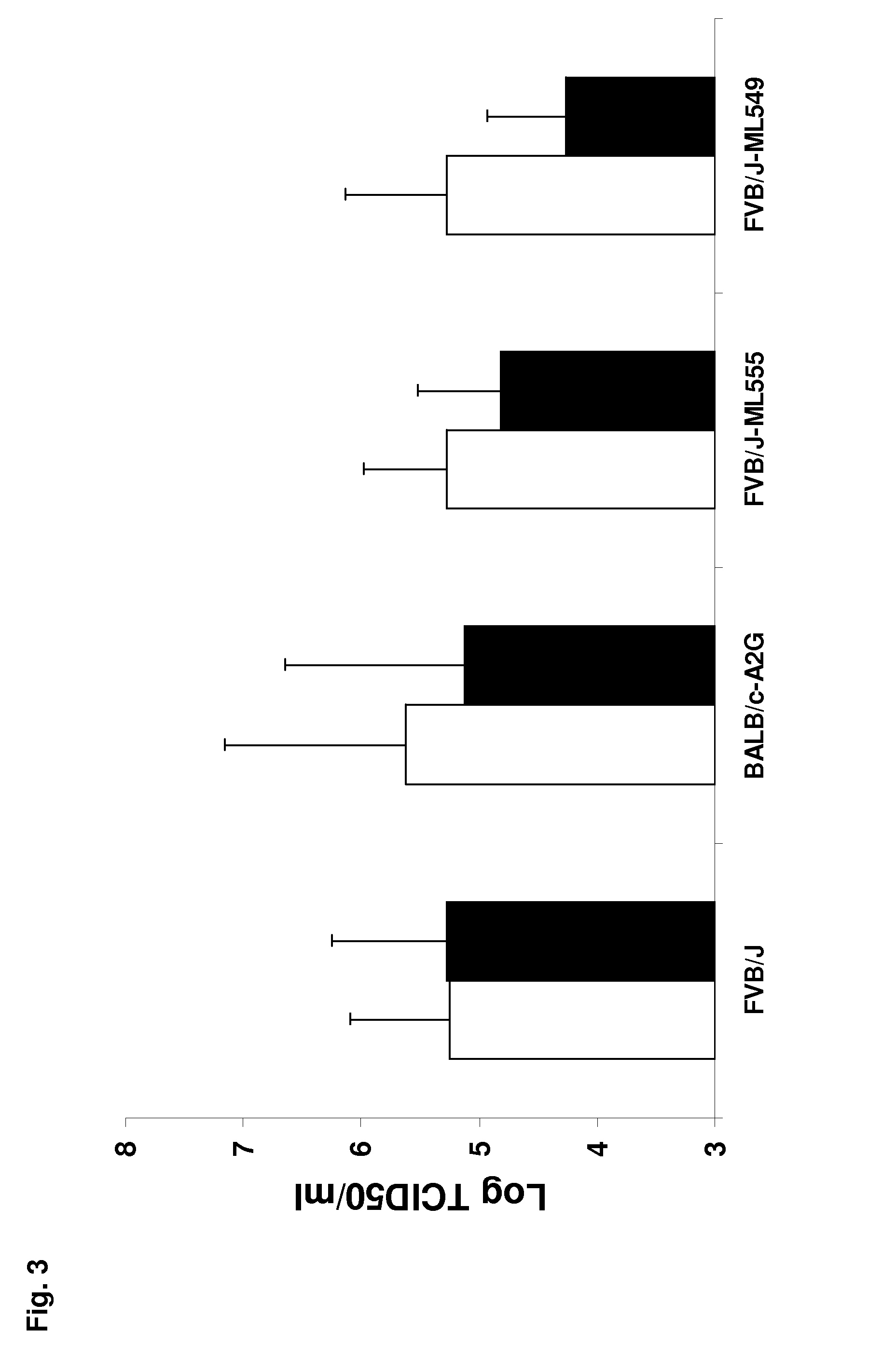Polynucleotide for use in treatment of influenza a virus induced diseases, encoding modified mx protein, said modified mx protein, and a transgenic animal expressing gene encoding modified mx protein
- Summary
- Abstract
- Description
- Claims
- Application Information
AI Technical Summary
Benefits of technology
Problems solved by technology
Method used
Image
Examples
example 3
In Vivo Mouse Models of Influenza A Virus H1N1 and H5N1 Pneumonia
[0173]Viruses—
[0174]Two influenza A viruses of low pathogenicity for the laboratory mouse, a clade 1 avian H5N1 virus (A / crested_eagle / Belgium / 1 / 2004) and a porcine H1N1 virus (A / swine / Iowa / 4 / 1976) were used. Both viruses were first propagated in the allantoic cavity of 10-day-old embryonating hen's eggs and then adapted to the mouse by lung-to-lung passaging. At each passage, a set of mice were inoculated intranasally with 50 μl of either allantoic fluid or lung homogenate containing influenza A virus. On day 5 post-inoculation (pi), the mice were euthanized by pentobarbital overdosing followed by exsanguination, the lungs were combined and homogenized in PBS-penicillin-streptomycin, the homogenates were centrifuged at 3,000 g for 10 min, and the supernatant was used for the next passage. The process was stopped when the mice became obviously sick on and after day 3-4 pi. This occurred after 5 (H5N1) or 31 (H1N1) pass...
example 4
Modulating Mouse Innate Immunity by Expressing Bos taurus Mx1 Dynamin
[0183]Generation of Transgenic Mice Carrying Bovine Mx1-Containing BAC305L8—
[0184]The Mx1− / − allelic status of FVB / J mice at the Mx1 locus was first demonstrated by combining in silico comparisons of available SNP data from a series of strains (http: / / www.informatics.jax.org / ), PCR amplification of the intron 10 to exon 11 junction and PCR-RFLV analysis of exon 14 using Hhal as described (Jin et al., 1998; Vanlaere et al., 2008). The purified BAC DNA was dissolved in microinjection buffer (10 mM Tris-HCl [pH 7.5], 0.1 mM EDTA, 30 μM spermine, 70 μM spermidine, 100 mM NaCl) at a concentration of about 2-4 ng / μl and microinjected into the pronuclei of FVB / J blastocysts. These were subsequently implanted in pseudo-pregnant recipients. Screening for integration of the BAC305L8 transgene in the resulting offspring and testing for further germ line transmission (after crossing of selected animals with wild-type FVB / J) we...
example 5
Generation of Mus musculus and Bos taurus Mx1-Expressing Embryonic Mouse Fibroblasts
[0207]Primary mouse embryonic fibroblasts (MEF) from congenic BALB / c-A2G and ML549, ML-555 and ML556 transgenic mice were harvested from 14-day-post-coitum embryos. First the head, liver, and intestine were dissected and the remaining fetal tissues were minced and rinsed in PBS. Fetal homogenates were then treated with trypsin (0.25% in Dulbecco's PBS), incubated for 30 min at 37° C., and subsequently dissociated in medium. After removal of perceptible tissue clumps, the remaining cells were plated out in a 25-cm2 flask containing DMEM supplemented with 10% heat-inactivated FCS, 1% (v / v) penicillin-streptomycin, and 0.5% amphotericin B. After a 4-h incubation, nonadherent cells were eliminated by gentle mixing, directly followed by medium replacement. Primary cultures reached confluence after ˜60 h and were split 1:2 for freezing in liquid nitrogen (passage 1 MEFs) or for plating out in 175-cm2 flask...
PUM
| Property | Measurement | Unit |
|---|---|---|
| Fraction | aaaaa | aaaaa |
Abstract
Description
Claims
Application Information
 Login to View More
Login to View More - R&D
- Intellectual Property
- Life Sciences
- Materials
- Tech Scout
- Unparalleled Data Quality
- Higher Quality Content
- 60% Fewer Hallucinations
Browse by: Latest US Patents, China's latest patents, Technical Efficacy Thesaurus, Application Domain, Technology Topic, Popular Technical Reports.
© 2025 PatSnap. All rights reserved.Legal|Privacy policy|Modern Slavery Act Transparency Statement|Sitemap|About US| Contact US: help@patsnap.com



